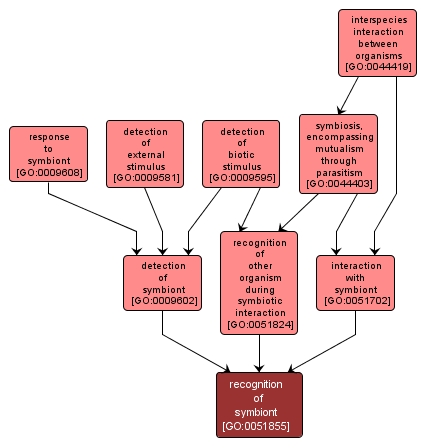GO TERM SUMMARY
|
| Name: |
recognition of symbiont |
| Acc: |
GO:0051855 |
| Aspect: |
Biological Process |
| Desc: |
The set of specific processes that allow an organism to detect the presence of its symbiont via physical or chemical signals. The symbiont is defined as the smaller of the organisms involved in a symbiotic interaction. |
|

|
INTERACTIVE GO GRAPH
|














